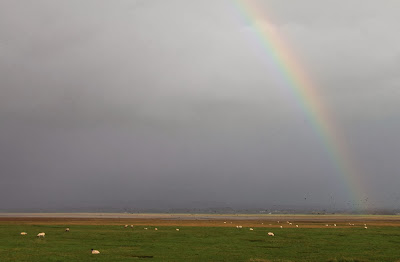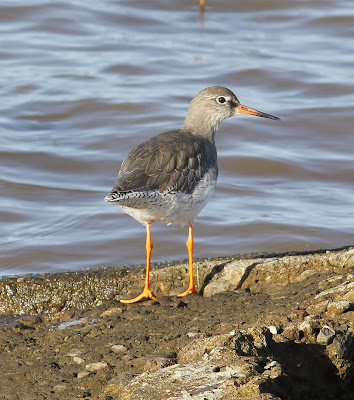I played at dodging the showers today, even managing a bit of birding during the few brief but welcome sunny spells.
As usual I started at Conder Green with a momentary spot of sunshine and time to take stock. There were the usual Little Grebes whereby I’d counted 10 or more until a Kingfisher flew through the binoculars to divert my attention towards the creek, the direction it went. I didn’t see the Kingfisher again but found 2 Spotted Redshanks at the junction of the creeks with 10 or so Redshanks.
Meanwhile on the pool/creek were 95 + Teal, 6 Cormorant, 3 Wigeon, 1 Grey Heron, 1 Little Egret and a single Pied Wagtail. Two Ravens flew overhead, with their loud and unmistakable calls heading west again. As I stood on the bridge a male Sparrowhawk flew past no more than a split second after alarm calls of Robin and Reed Bunting made me look around.
Conder Green
Cormorant
Very little to report from Glasson with the “highlights” being a flight over of 45 Pink-footed Goose, 3 Pied Wagtails and a feeding flock of 35+ Goldfinch.
I checked the Whooper Swans on the marsh at Fluke Hall and then counted 18 of them plus 8 Mute Swans, 70+ Shelduck and 3 Snipe. I had good reason to thank the shooters when their maize crop on the other side of the sea wall became the only shelter from a particularly heavy downpour. As I stood against the tall, thick stems Whooper Swans were flying from the marsh roost and overhead towards the stubble with my camera set to black & white. Less than a minute later I was on the sea wall to take a snap of the rainbow against the black sky over Lancaster.
Whooper Swans
Pilling Marsh
When the sun appeared there was a procession of Pintail flying in from the outer marsh and dropping onto the wildfowler’s pool. In all there were in excess of 95 Pintail. The Pintail is certainly one of the UK’s most elegant and beautiful ducks. More about ducks in next week’s blog with another look at The Crossley ID Guide: Britain and Ireland and a chance to win a copy- stay tuned.
Pintail
Pintail
There’s a good number of Lapwings starting to use the flooded field now, probably in excess of 300 although they are rather difficult to see amongst the black soil, the stubble itself and having to look through the still quite thick hawthorn hedge. Also on the stubble 30+ Skylarks and one or two more Snipe.
In the trees at Fluke Hall, 1 Buzzard and at least 3 raucous Jays.
More soon from Another Bird Blog. Linking today to Anni's Blog and Camera Critters.











































.jpeg)












.jpg)












